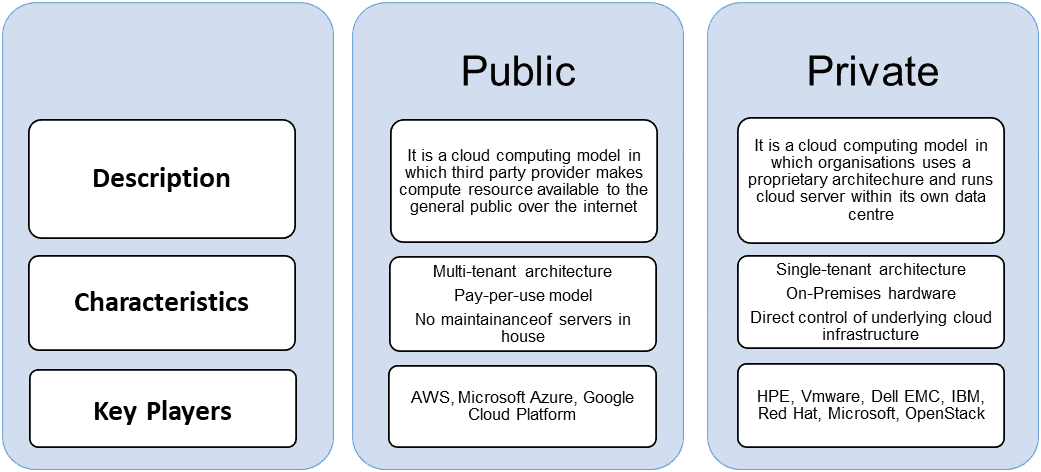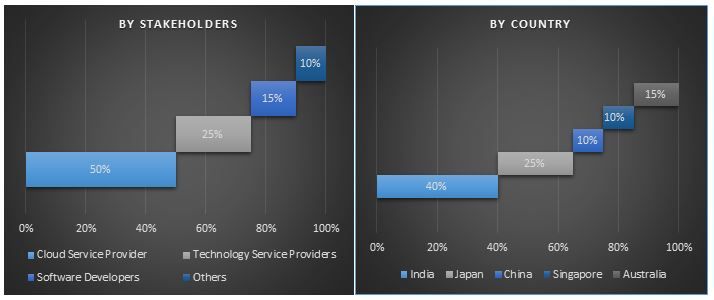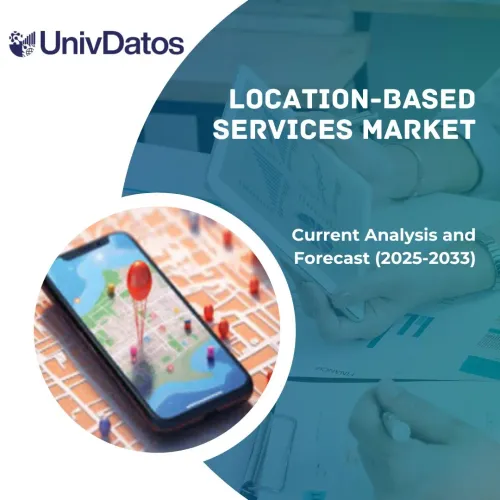- Home
- About Us
- Industry
- Services
- Reading
- Contact Us
Asia Pacific Cloud Infrastructure Market: Insights and Forecast, 2018-2024
Emphasis on Deployment Type (Public Cloud, Private Cloud), Public Cloud Services (SaaS, PaaS, IaaS, Cloud Advertising, BPaaS), Private Cloud Services ( Managed Hosting, Co-Location), End User (Banking, Financial Services and Insurance, Retail, Telecom & IT, Healthcare, Media & Entertainment, Government Agencies, Education, Energy, Manufacturing, Other Industries)
Cloud computing in Asia Pacific region has significantly pivoted to the next stage where the demand for cloud deployment models has risen and moved from simple back end functions to core business processes. Asia Pacific has become one of the fastest growing regions in terms of cloud computing adoption. Since security, performance and data availability constitutes as important parameters for consumers, consumers and businesses have become heavily reliant on the service providers for their computing needs in the specific region. As cloud adoption has witnessed rapid uptake, businesses are also adjusting their focus towards developing dynamic and agile businesses strategies. The cloud market in Asia Pacific (APAC) region is primarily driven by the initiatives undertaken by government agencies in respect to cloud market. Countries in Asia Pacific such as Singapore, Australia, India, Japan, China and South Korea are consistently displaying the higher growth rates in the respective market owing to rapid expansion of domestic industries in cloud service market. This has further resulted in a dramatic shift towards cloud computing, thereby benefiting organizations in terms of cost efficiency.
Graphical Representation of Cloud Computing Deployment Model Analysed in the Study

Asia Pacific Cloud Infrastructure Market garnered US XX Billion revenues and is anticipated to witness reasonable growth of 16.3% during the forecasted period (2018-2024). Moreover, the regional Asia Pacific cloud market has also matured owing to rapid uptake of IT spending, surge in government initiatives and mushrooming internet penetration. Consumers are now moving away from traditional connectivity options and diverting themselves towards cloud environment. Moreover, technology spending of Asia Pacific region has also seen moderate growth in 2017 and is anticipated to accelerate approximately 6% growth in 2018. Asia Pacific constitutes to be one of the fastest growing technology market and it has been estimated that during 2017 business and government spending on technology grew by around 3%. However, security concerns, lack of standardization and interoperability of technology remain some of the hampering growth factors for the regional cloud infrastructure market.
Insights Presented in the Report:
- The report analyses the cloud Infrastructure service majorly for public and private deployment model in Asia Pacific region. To further add to the analysis the report also segments the market based on cloud infrastructure service, end user industry which is deployed in different country worldwide.
- The report analysis all the potential countries which has showcased increased deployment of cloud service over the last decade. Public and private cloud deployment model is further bifurcated into different services including public cloud (Software as a Service (SaaS), Platform as a Service (PaaS), Infrastructure as a Service (IaaS), Business process as a Service (BPaaS) and cloud advertising. Cloud advertising public cloud services dominated the market in 2017 with a market share of 44% and is expected to maintain its dominance during the analysed period.
- Private cloud deployment model is segregated into managed hosting and Co-Location and former held the maximum share in the cloud market of Asia Pacific. It has been estimated that Managed Hosting will grow at reasonable CAGR of 13% during the forecasted period.
- The report also analysis the different potential end-user industries who are most frequent adaptor and are most likely to be the likely to be the growth driver for the industry. Banking, Financial Services and Insurance, Retail industry, Telecom & IT, Healthcare, Media & Entertainment, Government agencies, Education, Energy and Manufacturing among others are the major end user industry analyzed during the study. In the Telecom & IT sector huge amount of data are generated owing to this, the sector has emerged as the largest adopter of cloud computing accounting for a market share of more than 1% in 2017.
- For better understanding of the geographical penetration of cloud service market in Asia Pacific region, the market is analyzed based on its outreach in the countries such as China, Japan, Australia, India, Singapore, South Korea and rest of Asia Pacific. Asia Pacific holds one of the largest market share in the global cloud computing market due to surging data center penetration. Japan and China constitute to be the forerunners in Asia Pacific cloud infrastructure market. Japan cloud infrastructure market is expected to reach US 33.7 Billion by 2024. Considering China’s legacy in cloud infrastructure, Apple has undertaken investment in China to build a second data centre in the country. China is anticipated to be witnessed as the largest market for public cloud services and also in terms of overall IT spend.
- Asia Pacific cloud computing market also provides competitive benchmarking of leading players in this market, which includes profiling of companies such as Cisco System Inc., Equinix Inc., Google Inc., IBM Corporation, Salesforce.com, AT&T Inc., Amazon Web Services Inc., DXC Technology Company, HP Inc., and Rackspace Hosting Inc. These companies have been operating in this sector for several years and have diversified product portfolios, innovative technologies, and strong distribution networks worldwide.
Reasons to buy the Report:
- The study includes market sizing and forecasting analysis validated by authenticated key industry experts
- The report presents a quick review of overall industry performance at one glance
- The report covers in depth analysis of prominent industry peers with primary focus on key business financials, product portfolio, expansion strategies and recent developments
- Detailed examination on drivers, restraints, key trends and opportunities prevailing in the industry.
- Examination of industry attractiveness with the help of Porter’s Five Forces analysis
- The study comprehensively covers the market across different segments
- Deep dive regional level analysis of the industry
Customization Options:
The Asia Pacific Cloud Infrastructure Market can be customized to country level or any other market segment. Besides this, UMI understands that you may have your own business need, hence we also provide fully customised solutions to clients.
Table of Content
Analysing historical market, estimation of the current market and forecasting the future market for Asia-Pacific Cloud Infrastructure services market were the three major steps involved in creating and analysing the overall market of the Asia-Pacific Cloud Infrastructure Services Market. Exhaustive secondary research was conducted to collect the historical market of the technology and overall estimation of the current market. Secondly, to validate these insights, numerous findings and assumptions were taken into consideration. Moreover, exhaustive primary interviews were conducted with industry experts across value chain of the Asia-Pacific Cloud Infrastructure Services Market. After all the assumption, market sizing and validation of market numbers through primary interviews, top-down approach was employed to forecast the complete market size of the Asia-Pacific Cloud Infrastructure Services Market. Thereafter, market breakdown and data triangulation methods were adopted to estimate and analyse the market size of segments and sub-segments of the technology. Detailed methodology is explained below:
Analysis of Historical Market Size
Step 1: In-Depth Study of Secondary Sources:
Detail secondary study was conducted to obtain the historical market size of the Asia-Pacific Cloud Infrastructure Services Market through company internal sources such as annual report & financial statements, performance presentations, press releases, inventory records, sales figures etc. and external sources including trade journals, news articles, government publications, competitor publications, sector reports, regulatory bodies publications, safety standard organizations, third-party database and other creditable publications.
Step 2: Market Segmentation:
After obtaining historical market size of the overall market, detailed secondary analysis was done to gather historical market insights and share for different segments & sub-segments for the Asia-Pacific Cloud Infrastructure Services market. Major segments included in the report are public and private deployment model, cloud infrastructure service and end-user industry. Further analysis was also done for sub-segments of the major segments of the Asia-Pacific Cloud Infrastructure Services market.
Step 3: Factor Analysis:
After acquiring the historical market size of different segments and sub-segments, detailed factor analysis was conducted to estimate the current market size of the Asia-Pacific Cloud Infrastructure Services market. Factor analysis was conducted using dependent and independent variable such the preferences of deployment model type i.e. public and private, purchasing power of customers, security concern of data etc. Historical trends of the Asia-Pacific Cloud Infrastructure Services market and its year-on-year impact on the market size and share in the recent past was analyzed. Demand and supply side scenario was also thoroughly studied.
Current Market Size Estimate & Forecast
Current Market Sizing: Based on actionable insights from the above 3 steps, we arrived at current market size, key players in major applications and markets, market shares of these players, industry’s supply chain, and value chain of the industry. All the required percentage shares, splits, and market breakdowns were determined using the above-mentioned secondary approach and were verified through primary interviews.
Estimation & Forecasting: For market estimation and forecast, weightage was assigned to different factors including drivers & trends, restraints, and opportunities. After analyzing these factors, relevant forecasting techniques i.e. Bottom-up/Top-down was applied to arrive at the market forecast pertaining to 2024 for different segment and sub-segments for the technology in major Asian countries. The research methodology adopted to estimate the market size encompasses:
- The industry’s market size, in terms of value (US$) and rate of adoption Cloud Infrastructure services in major Asian countries
- All percentage shares, splits, and breakdowns of market segments and sub-segments
- Key players in major applications and markets as well as market share of each players. Also, the growth strategies adopted by these players to compete in the ever-growing Asia-Pacific Cloud Infrastructure Services market
Market Size and Share Validation
Primary Research: In-depth interviews were conducted with the Key Opinion Leaders (KOLs) including Top Level Executives (CXO/VPs, Sales Head, Marketing Head, Operational Head, and Regional Head etc.). Primary research findings were summarized, and statistical analysis was performed to prove the stated hypothesis. Input from primary research were consolidated with secondary findings, hence turning information into actionable insights.
Split of Primary Participants
Market Engineering
Data triangulation technique was employed to complete the overall market engineering process, to arrive at precise statistical numbers of each segment and sub-segment pertaining to the Asia-Pacific Cloud Infrastructure Services Market. Data was split into several segments & sub-segments post studying various parameters and trends in the areas of Deployment Type i.e. Public or Private deployment. Public Cloud Services i.e., Software as a Service (SaaS), Platform as a Service (PaaS), Infrastructure as a Service (IaaS), Business process as a Service (BPaaS) and Cloud Advertising along with Private Cloud services i.e. Managed Hosting and Co-Location were considered while forecasting the market. Also detailed analysis of the technology in major industrial segment was also considered in the study.
Main objective of the Asia-Pacific Cloud Infrastructure Services Market Study
The current & future market trends of the Asia-Pacific Cloud Infrastructure Services market are pinpointed in the study. Investors can gain strategic insights to base their discretion for investments from the qualitative and quantitative analysis performed in the study. Current and future market trends would determine the overall attractiveness of the market, providing a platform for the industrial participant to exploit the untapped market to benefit as first mover advantage. Other quantitative goal of the studies includes:
- Analyse the current and forecast market size of the Asia-Pacific Cloud Infrastructure Services market in terms of value (US$)
- Analyse the current and forecast market size of different segments and sub-segments of the Asia-Pacific Cloud Infrastructure Services market
- Segments in the study include deployment type, public and private deployment, end-user industry and country
- Define and describe the technologies and protocols used in the Asia-Pacific Cloud Infrastructure Services market
- Anticipate potential risk associated with the technology along with customer and competitor analysis, etc.
- Define and analysis of the government regulations for the Asia-Pacific Cloud Infrastructure services market
- Analyse the current and forecast market size of Asia-Pacific Cloud Infrastructure Services market for major Asian countries including China, Japan, India, Singapore, South Korea, Australia and Rest of APAC
- Define and analyse the competitive landscape of the Asia-Pacific Cloud Infrastructure Services market and the growth strategies adopted by the market players to sustain in the ever-growing market
Related Reports
Customers who bought this item also bought











